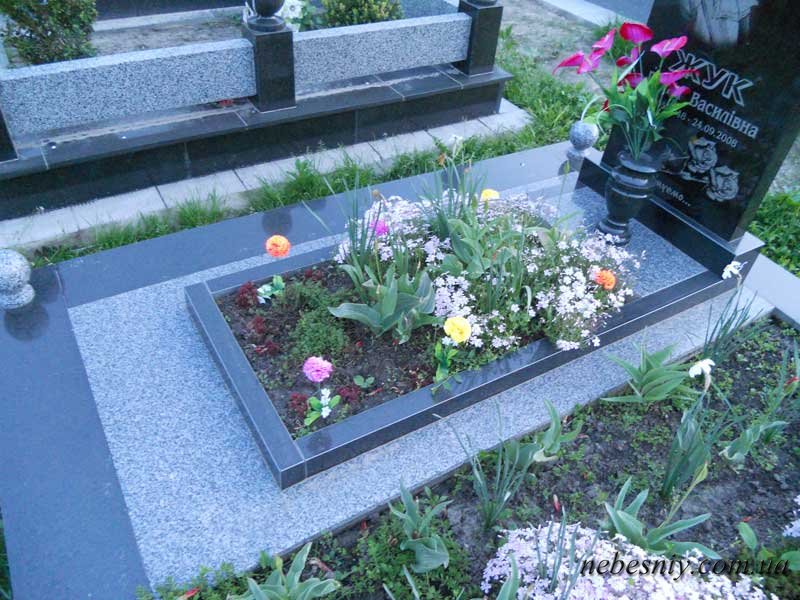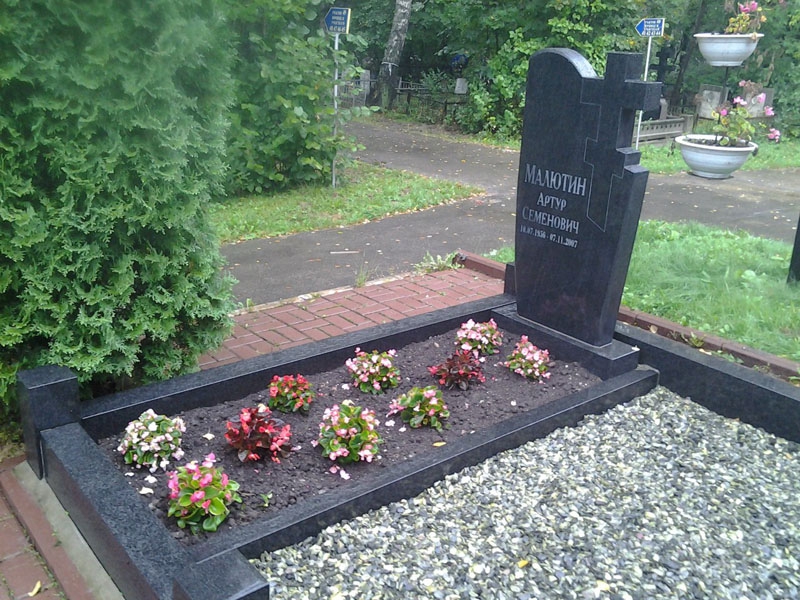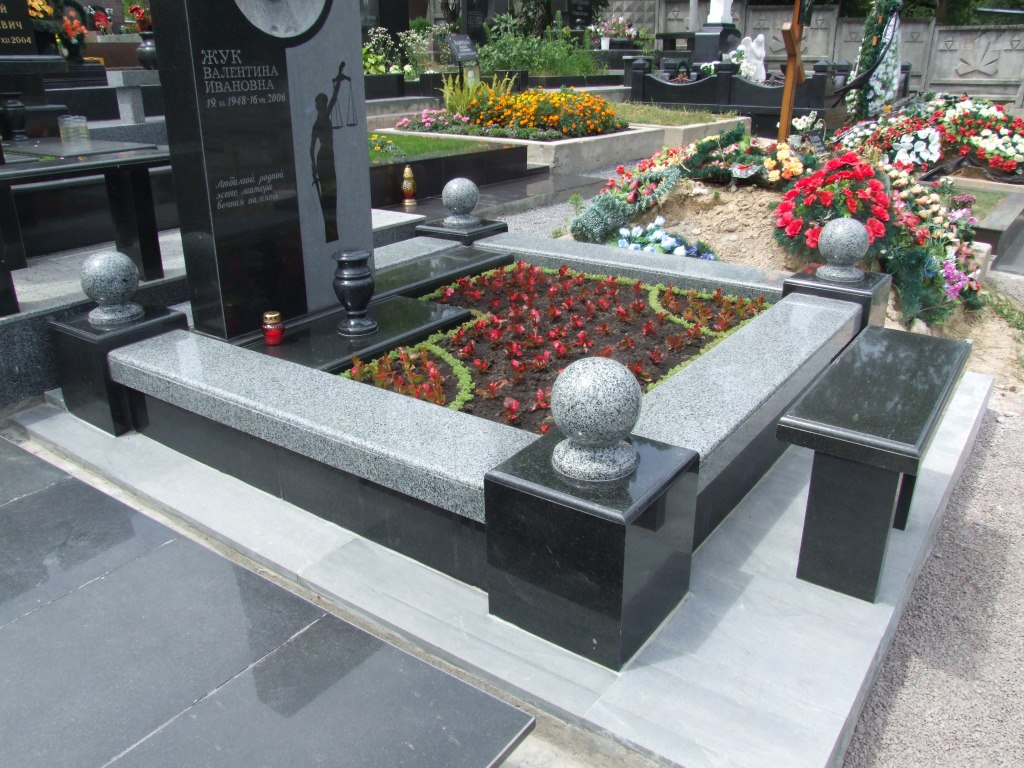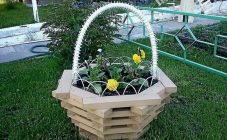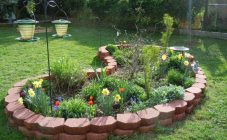Content:
Loving relatives often visit their deceased and try to make their last refuge as good as possible. It is customary among the people not only to bring flowers to the churchyard, but also to create real flower beds there. A flower garden on the grave complements the monument well, but it can also become a worthy alternative to it.
Types of flower beds
While decorating the grave, someone puts a wooden cross and sows fresh flowers nearby. Others set up flowerpots for artificial products. But most prefer a framed tombstone.
There are firms specializing in the manufacture and installation of such elements for decorating burials (and not only in Moscow). As a rule, they have a large assortment to choose from:
- you can buy an open flower garden on the grave and plant it with unpretentious plants;
- the semi-open version is a combination of a slab lying on the grave and a flower girl placed next to it;
- if you liked a tombstone laid on a flower garden, then a homemade flower bed is desirable nearby;
- the flower girl can have various shapes: triangular, rectangular, round;
- there are single-storey and multi-storey structures;
- free standing or integrated with the monument.
As for the material, it can be any durable structure that attracts the customer externally and is suitable for the price.
Materials for a burial garden
| View | Features: |
| Porcelain stoneware | The most demanded option. It is installed on a concrete base. Alternatively, you can choose cast polymer granite |
| Concrete | Integrates perfectly with monuments. Possesses high frost and moisture resistance. Calmly endures extreme weather |
| Metal | Forged material gives grace and sophistication to the flower garden |
| Granite | Solid, reliable and aesthetic at the same time. The most popular shades of red and black |
| Cast marble | Very beautiful, elegant, decorative, but in terms of durability it is significantly inferior to natural material |
Reinforced concrete flower beds are in demand because of their versatility, compactness and affordability. But they look pretentious and corrosive.
The size of the flower garden on the grave
Once flower beds were made exclusively according to standard sizes, where the length was 100 cm, width - 50 cm (according to the parameters of the grave). Now, thanks to modern technologies and the latest equipment, the client chooses the size and shape. Although the standard size is still in demand.
Companies often work on individual orders, here the burial itself and its area are taken into account. If the usual standard is suitable for a single grave, then for a family graveyard you can make a large flower garden that combines several burials.
DIY installation
True, the specialists already have a full hand, and they will get the job done faster.
But it is also realistic to install a flower girl on your own, if you follow the instructions and take into account the features of the material. Several options for traditional flower beds are described below.
Metal construction
The metal flower garden is lightweight, as it is made of corners and a channel in 2 tiers. For the stability of the installation, several reinforcement rods (4-6 pcs.) Are welded to the bottom part.
A flower garden made of metal is installed on the grave after the monument (stele, cross) takes its place. The design will become neat if you follow these steps:
- at the site of the grave embankment, a site of the required size is cleared with a small depression relative to the surface of the earth;
- take 2 reinforcing bars a meter long and put them on the places where the flower garden is installed, keeping the distance between the rods at 0.5 m;
- a flower girl is installed on the reinforcement, tightly moving it to the monument;
- the gap between the structural elements is poured with cement mortar (for better adhesion);
- the flower garden is filled with the brought earth;
- it is also added to it from the outside.
From polymer granite
The installation of the memorial complex is carried out after the ground on the grave is stabilized. It is evenly leveled, creating a platform on which a trench is being dug, protruding 10 cm beyond the grave pit along the perimeter. It is necessary to deepen it by 12-15 cm.
To do this, first, using a cord and pegs, parameters are drawn up on the site in accordance with the shape and size of the monument with a flower garden. If desired, at the bottom of the trench, you can create a "pillow" of fine stone or sand.
Then follow this algorithm:
- They begin to form a strip foundation:
- wire rod or steel rods (2-3 pcs.) are laid along the perimeter of the pit for reinforcement;
- set the formwork, keeping the vertical and horizontal levels using the level;
- in the place where the monument will be, several vertical fittings are fixed;
- the formwork is filled with concrete;
- having tamped the solution, leave it to harden (2-3 weeks).
- When the foundation is ready, they put a flower garden on the solution, trying to perfectly fit the details.
Having cleared the polymer from excess cement and grouting the joints, you can proceed to the installation of the monument.
Concrete
When the elements of the flower garden fall into place, the joints are poured with cement dough. An hour later, the excess solution is rubbed over and the monument is occupied.
Artificial stone
Experts recommend choosing a one-piece artificial flower garden for the grave. This will make it easier to withstand weather conditions and will last longer. The installation process is identical to that described above - with concrete pouring of the trench.
It will be enough 2-meter beams, on which the paving slab is laid, where holes for the standard size of the flower garden are already provided. They install this element of the burial structure, planting it on a cement mortar.
From marble
Everything is as usual - the cross-member is installed on the floor beams, the longitudinal elements are placed in the trench. The bottom is poured with concrete, and when it hardens, a flower garden is installed. In this case, the adhesive mortar is laid only at the ends of the structural parts.
Flower garden in a cemetery without a foundation
For the strength of the structure, you will need concrete beams, the dimensions of which are selected for the weight of the flower garden with the monument.They are evenly distributed along the trench, placing the sole on the cement mortar. A flower garden is installed on the beams and covered with earth.
